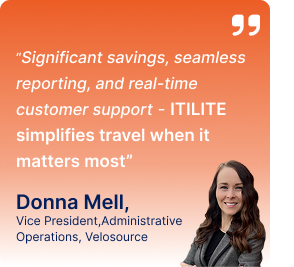According to a recent survey by the Association of Finance Professionals, businesses using integrated payment authorization systems with their ERP software reduce unauthorized spending by 73% and save an average of 12.4 hours weekly in manual reconciliation tasks.
Despite these compelling benefits, many Acumatica users continue to struggle with disconnected payment systems that create financial blind spots and compliance risks.
Why Does Corporate Card Integration Matter for Acumatica Users?
Acumatica helps businesses centralize their operational data. But if your corporate card doesn’t properly integrate, your financial data remains fragmented, and that defeats the purpose. As Maria Rodriguez, CFO at a leading construction firm, puts it:
“The disconnect between ERP systems and payment authorization creates significant financial vulnerabilities. When your credit card doesn’t properly integrate with Acumatica, you’re essentially creating a data silo that requires manual reconciliation, increasing both labor costs and error potential.”
– Maria Rodriguez, CFO at a large construction company
Key integration challenges include:
- Authorization gaps between transactions and the Acumatica financial modules
- Manual receipt matching consumes administrative resources
- Delayed expense visibility affects financial reporting accuracy
- Reconciliation errors impacting month-end close processes
- Limited automation of approval workflows and policy enforcement
What to Look For in a Credit Card Built for Acumatica
Not all corporate cards are created equal, especially when it comes to ERP integration. The best ones do more than sync transactions in expense management platforms; they help you stay ahead of spending and reduce financial friction across teams.
Here are the five key features that set the top cards apart:
Advanced Authorization: Validates spend against budgets and policies in real time.
Smart API Integration: Auto-tags transactions to the right GL and project.
Receipt Matching: OCR links receipts to expenses instantly.
Real-Time Visibility: Live feeds keep budgets up to date.
Industry Categories: Pre-mapped to match your Acumatica setup.
Calculate your savings now!
Which Credit Cards Offer the Best Integration with Acumatica in 2025?
After evaluating dozens of credit cards on integration, features, and user feedback, these five emerged as the top contenders for Acumatica users.
1. itilite Corporate Card for Acumatica
Integration Rating: 5/5
itilite’s corporate card solution stands alone in the industry with its proprietary authorization engine specifically designed for Acumatica ERP integration. Unlike competitors that merely sync transaction data after purchases occur, itilite’s system validates expenses against Acumatica budgets and policies in real-time before authorization.
Key Authorization Capabilities:
- Pre-authorization checks against Acumatica financial data (itilite exclusive)
- Real-time policy enforcement at purchase
- Auto-adjusting project-based spending limits
- Multi-level approvals aligned with Acumatica hierarchies
- Vendor rules to block off-contract spending
Additional Integration Features:
- Direct API connection to all Acumatica modules with 99.8% data accuracy
- Automated receipt matching with AI-powered validation
- Real-time transaction visibility in Acumatica dashboards
- Industry-specific expense management categories pre-mapped to Acumatica accounts
- Virtual card capabilities with project-specific controls
“itilite’s authorization engine eliminated approximately 94% of our policy violations by preventing unauthorized purchases before they happen. Other cards we tried could only flag violations after the fact, creating a reactive rather than proactive approach to expense management.”
– Thomas Chen, Controller at Construction firm
2. EBizCharge Business Card
Integration Rating: 4.1/5
While EBizCharge offers Acumatica-certified integration, their authorization capabilities fall significantly short of itilite’s proactive approach.
Authorization Limitations:
- Relies on post-purchase reconciliation rather than pre-approval through cc authorization
- Cannot validate expenses against Acumatica budgets in real-time
- Limited ability to prevent policy violations before they occur
- Requires manual intervention for exception handling
Integration Features:
- API connection to Acumatica payment modules
- Basic receipt matching functionality
- Delayed transaction visibility
- Limited industry-specific and business travel expense categories
3. REPAY Commercial Card
Integration Rating: 3.8/5
While REPAY has developed Acumatica-specific features, its authorization system lacks the sophisticated integration with Acumatica that itilite provides.
Authorization Limitations:
- No pre-authorization validation against Acumatica data
- Cannot enforce project-specific policies at the point of purchase
- Disconnected approval workflows from Acumatica hierarchies
- Limited ability to prevent unauthorized spending
Integration Features:
- Basic API integration with Acumatica financial modules
- Manual expense categorization requiring user input
- Generic spending limits not tied to project phases
- Limited policy enforcement capabilities
4. Fortis Business Card
Integration Rating: 3.6/5
Fortis offers general business integration capabilities but lacks Acumatica-specific authorization features critical for ERP users.
Authorization Limitations:
- No Acumatica-specific authorization rules
- Cannot validate against Acumatica project data
- Generic approval workflows not aligned with ERP processes
- No ability to prevent unauthorized project spending through cc authorization
Integration Features:
- Basic API access with limited module support
- Manual receipt uploads and data entry
- Generic transaction coding
- Standard rewards, not tailored to industries
5. Braintree Business Card
Integration Rating: 3.4/5
Braintree’s business card provides basic integration features but lacks the sophisticated authorization capabilities of itilite, especially for corporate travel.
Authorization Limitations:
- Budget controls operate independently from Acumatica data
- No real-time validation against project specifications
- Cannot enforce vendor-specific spending rules
- Limited ability to prevent unauthorized purchases
Integration Features:
- Basic integration requiring a third-party
- Delayed expense tracking requiring manual coding
- Generic approval workflows requiring configuration
- Limited virtual corporate card functionality
How Does itilite’s Authorization Engine Transform Acumatica Expense Management?
What makes itilite a game-changer isn’t just the integration, it’s the intelligence behind the authorization. While most cards wait until after the purchase to flag issues, itilite stops non-compliant spending at the source.
Here’s what makes the difference:
Pre-Purchase Validation: Stops violations by checking budgets before spend.
Dynamic Project Controls: Limits auto-adjust by phase and usage.
Smart Vendor Enforcement: Blocks unapproved vendors via Acumatica rules.
Integrated Approvals: Syncs with Acumatica roles for faster approvals.
Real-Time Budget Visibility: Shows budget impact instantly in Acumatica.
The ROI of Choosing the Right Card
Companies implementing itilite’s corporate card solution with Acumatica integration typically experience:
- 94% reduction in policy violations through pre-authorization validation
- 82% decrease in unauthorized spending through proactive controls
- 63% improvement in budget adherence through real-time visibility
- 21-day acceleration in monthly financial close processes
- Enhanced financial accuracy through precise expense control
“The difference between itilite and other solutions we tried was night and day. With other cards, we were constantly chasing down unauthorized expenses after they happened. itilite’s authorization engine prevents these issues before they occur, giving us unprecedented control over our spending.”
– James Wilson, Finance Director at Summit Manufacturing
Final Thoughts
If your business runs on Acumatica, your corporate card shouldn’t operate in a silo. Choosing a card built for seamless integration, with real-time visibility, project-level controls, and smart cc authorization, isn’t just operationally smart. It’s financially strategic.
With itilite, every swipe is pre-validated, every receipt is auto-matched, and every dollar is tracked the moment it’s spent. That means fewer errors, faster closes, and total confidence in every financial decision you make.
True integration means real-time data synchronization between the credit card system and Acumatica’s financial modules, automated expense categorization, and pre-authorization validation against budgets and policies. The best solutions like itilite offer bidirectional communication where Acumatica data influences authorization decisions in real-time.
Integration eliminates manual data entry errors, ensures consistent expense categorization, and provides real-time transaction visibility. This results in more accurate financial statements, faster month-end closes, and better budget tracking within Acumatica’s reporting modules.
Common challenges include API compatibility issues, delayed transaction posting, manual receipt matching, inconsistent expense categorization, and lack of real-time budget validation. Many solutions also struggle with project-specific expense allocation and multi-entity reporting.
Yes, integrated solutions provide complete audit trails, automated policy enforcement, and real-time compliance monitoring. They ensure all transactions are properly documented, categorized, and approved according to company policies and regulatory requirements.
Implementation timelines vary by solution complexity. Basic integrations may take 2-4 weeks, while comprehensive solutions like itilite with advanced authorization capabilities typically require 4-8 weeks for full deployment, including user training and policy configuration.
Pre-authorization validation checks transactions against Acumatica budgets, policies, and project parameters before approving purchases. This prevents unauthorized spending, ensures budget compliance, and eliminates the need for post-purchase corrections that can disrupt financial reporting.
Advanced solutions like itilite integrate with Acumatica’s project modules to enforce project-specific spending limits, validate vendor approvals, and ensure expenses align with project phases and budgets. This prevents cost overruns and maintains project profitability.
Look for PCI DSS compliance, encrypted data transmission, tokenization of sensitive information, multi-factor authentication, and role-based access controls that align with Acumatica’s security framework. The integration should maintain the same security standards as your ERP system.
Yes, integrated solutions provide enhanced fraud protection through real-time transaction monitoring, vendor validation against approved supplier lists, and spending pattern analysis. They can automatically flag or block suspicious transactions based on Acumatica data.
The best integrations synchronize approval hierarchies between systems, eliminating duplicate approvals. Transactions can be automatically routed through Acumatica’s existing approval workflows, ensuring consistent policy enforcement across all financial processes.
Preparation includes mapping expense categories to GL accounts, defining approval workflows, establishing spending policies, identifying integration requirements, and ensuring Acumatica user permissions are properly configured. A thorough data audit is also recommended.
Training should cover expense policy compliance, receipt capture procedures, mobile app usage, approval processes, and integration-specific features. Focus on how the integration simplifies their workflow while maintaining compliance with company policies.
Regular maintenance includes monitoring API connections, updating expense categories, reviewing approval workflows, analyzing spending patterns, and ensuring policy compliance. Most integrated solutions provide automated monitoring and alerts for system issues.
Key metrics include reduction in manual processing time, improvement in expense reporting accuracy, decrease in policy violations, faster month-end close times, and increased user adoption rates. ROI should be measured against previous manual processes.
Common mistakes include inadequate user training, incomplete policy configuration, poor expense category mapping, insufficient testing, and rushing implementation without proper change management. Take time to properly configure and test all integration points.
Most companies see positive ROI within 6-12 months through reduced administrative costs, improved accuracy, and better spending control. Advanced solutions like itilite often deliver ROI within 3-6 months due to their comprehensive automation capabilities.
Costs vary based on features, user count, and integration complexity. While premium solutions like itilite may have higher upfront costs, they often provide better long-term value through superior automation and reduced manual processing requirements.
Consider ongoing API maintenance fees, user training costs, system customization expenses, data migration costs, and potential Acumatica module upgrades. Also factor in the cost of manual processes that integration will eliminate.
Most integrations don’t require additional Acumatica licenses, but some advanced features may need specific modules. Consult with your Acumatica partner to understand any licensing implications before implementation.
Companies typically save 60-80% on expense processing costs through automation, reduced errors, and faster approvals. Additional savings come from better spending control, improved vendor negotiations, and reduced audit costs.
Essential APIs include real-time transaction posting, automated GL account mapping, receipt data extraction, approval workflow triggers, and budget validation. The API should support bidirectional data flow and real-time synchronization.
Mobile apps should provide real-time access to Acumatica data, automated receipt capture with OCR, expense categorization based on GL accounts, approval notifications, and spending limit visibility. The best apps work offline and sync when connectivity returns.
Real-time synchronization is ideal for authorization decisions and budget validation. Transaction details can be synchronized every 15-30 minutes, while receipt data and approvals should update in real-time to maintain workflow efficiency.
Advanced integrations support multi-entity configurations with separate policies and approval workflows per company. Currency conversion should be handled automatically with real-time exchange rates, and transactions should post to the correct entity based on cardholder assignment.
Ensure both credit card and Acumatica systems have synchronized backup schedules, test disaster recovery procedures regularly, maintain offline transaction capabilities, and have clear data recovery protocols that preserve transaction integrity across both systems.
Construction companies benefit from project-specific expense tracking, job site purchase controls, equipment rental management, and subcontractor payment integration. The integration helps maintain project profitability and provides real-time cost visibility.
Manufacturing companies benefit from supplier-specific controls, purchase order integration, inventory-related expense tracking, and production cost allocation. Integration helps maintain accurate cost accounting and supplier relationship management.
Service companies benefit from client-specific expense allocation, time and expense integration, project billing accuracy, and consultant travel management. The integration ensures accurate client billing and project profitability analysis.
Retail companies benefit from store-specific expense tracking, vendor payment management, seasonal spending controls, and multi-location reporting. Integration helps maintain consistent financial controls across all retail locations.
Non-profits benefit from grant-specific expense tracking, donor fund allocation, compliance reporting, and restricted fund management. Integration ensures proper fund utilization and simplifies audit processes for regulatory compliance.
Integration provides automated tax categorization, receipt documentation, expense deduction tracking, and audit trail maintenance. This simplifies tax preparation and ensures compliance with business expense regulations.
Integration provides complete transaction trails, automated policy compliance checking, real-time violation alerts, and comprehensive reporting. This reduces audit preparation time and ensures regulatory compliance.
Integration supports SOX compliance through automated controls, segregation of duties, approval workflow documentation, and comprehensive audit trails. This reduces compliance costs and ensures consistent control enforcement.
Integrated systems provide real-time spending dashboards, budget variance reports, policy compliance analytics, vendor spending analysis, and custom financial reports. All reports can be generated directly within Acumatica’s reporting framework.
Integration supports multiple tax jurisdictions, currency regulations, international expense policies, and country-specific reporting requirements. This is essential for companies with global operations using Acumatica.
Leading solutions like itilite maintain compatibility through regular API updates, feature enhancement programs, and close partnerships with Acumatica. This ensures continued functionality as both systems evolve.
Consider user growth capacity, transaction volume limits, multi-entity support, international expansion capabilities, and API performance under load. Choose solutions that can scale with your business growth.
Construction companies benefit more from specialized solutions like Itilite that understand industry-AI enhances integration through intelligent expense categorization, fraud detection, spending pattern analysis, automated receipt processing, and predictive budget management. These features improve accuracy and reduce manual intervention.
Emerging technologies include blockchain for transaction verification, machine learning for expense prediction, IoT for automated expense capture, and advanced analytics for spending optimization. These will further enhance integration value.
Companies should choose flexible platforms, maintain clean data structures, invest in user training, stay current with technology trends, and partner with vendors committed to continuous innovation and Acumatica compatibility.
itilite’s authorization engine is the only solution that validates transactions against Acumatica data in real-time before authorization. This prevents policy violations rather than just reporting them, providing unprecedented spending control.
itilite automatically adjusts spending parameters based on Acumatica project data, including budget utilization, timeline, and phase-specific requirements. This ensures spending remains aligned with project goals without manual intervention.
itilite enforces vendor-specific spending rules based on contracts stored in Acumatica, prevents unauthorized purchases from non-approved suppliers, and ensures negotiated pricing is applied automatically at the point of purchase.
When a purchase is attempted, itilite instantly calculates and displays the impact on budgets within Acumatica, providing managers with unprecedented financial visibility and enabling informed spending decisions in real-time.
Companies typically see 94% reduction in policy violations, 82% decrease in unauthorized spending, 63% improvement in budget adherence, and 21-day acceleration in monthly financial close processes through itilite’s advanced integration capabilities.
Support typically includes technical documentation, user training materials, help desk support, system monitoring, and escalation procedures. Leading providers like itilite offer dedicated Acumatica integration specialists.
Establish clear procedures for offline operations, maintain backup approval processes, implement automatic failover systems, and ensure rapid notification of system issues. Test these procedures regularly to ensure effectiveness.
Use API monitoring tools, transaction processing dashboards, error logging systems, and performance analytics. Set up automated alerts for system issues and establish regular health checks for both systems.
TRegular optimization includes reviewing expense categories, updating approval workflows, analyzing user adoption patterns, monitoring API performance, and implementing user feedback. Continuous improvement ensures maximum value from the integration.
Stay current through vendor newsletters, user community forums, Acumatica partner events, industry publications, and regular training sessions. Engage with both your credit card provider and Acumatica partner for ongoing optimization guidance.








